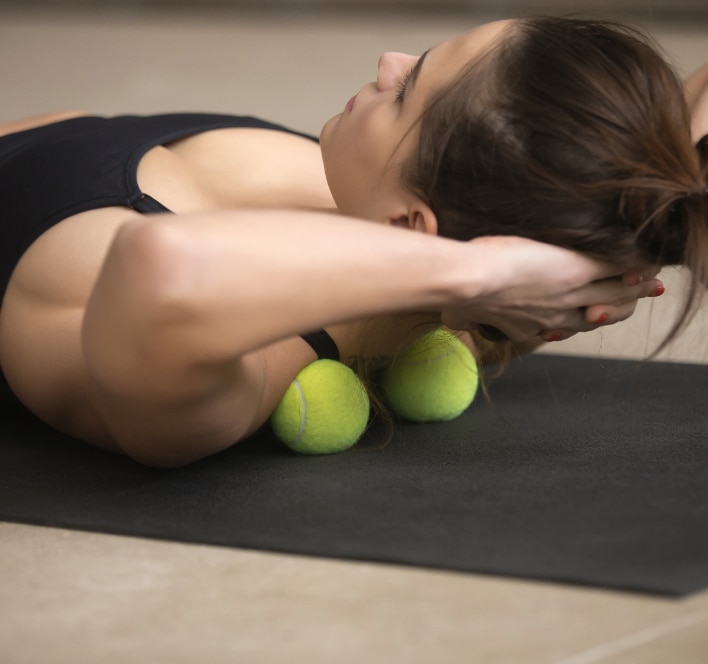A few tennis balls and a sock used correctly can reach the deepest layers of muscle and connective tissue and allow muscles to stretch and contract fully. A tennis ball’s proper placement and usage can relieve discomfort and pain. Tennis balls act like foam rollers and massage the lower back. The rolling effect can have a localized and overall influence in relieving pain in the lower back. Continue reading to learn more from NJ Spine & Ortho.
How Tennis Balls Relieve Lower Back Pain
The massaging effect of a tennis ball reduces the hyperactivity of the nerves in the lower back, reducing the pain signals sent to the brain. A tennis ball can also help:
- Reduce tension in the muscles and connective tissues
- Improve the functioning of blood vessels and increase blood flow
- Promote the flow of healing nutrients and nourishment
- Release endorphins to reduce the overall perception of pain
A tennis ball massage can relax and heal the lower back tissues and help loosen muscles before a workout or stretching. It’s beneficial to keep at least two tennis balls at hand to help relieve the tension of the lower back or leg muscles.
3 Way to Use a Tennis Ball to Relieve Lower Back Pain
The placement of the tennis ball and how it rolls determines whether it’s beneficial to relieving lower back pain. It’s essential to listen to the body if a particular placement or movement hurts more than an ache or sore change positions.
1. Apply Concentrated Pressure
You may either lie on the floor or sit in a chair during this tennis ball technique. Place the tennis ball under your lower back, buttocks, or upper thighs. Apply pressure by lying on top of the tennis balls or pressing your back against the chair. Move around gently until the tennis ball presses against the sore muscle group. Do not tool the ball directly over the spine. If there is sharp or sudden pain, then stop immediately.
2. Double Tennis Ball Massage
Two tennis balls need to be duct-taped together until they look like a peanut. Once they are in the right shape, you have a DIY massager. Follow the instructions below:
- Place the two tennis balls on the ground and lie on your back with your knees bent. The tennis ball needs to be above your lower back and parallel to your hips.
- Make sure each tennis ball is positioned on either side of the spinal column. This placement should make you feel balanced and comfortable.
- Once you and the tennis ball are in the proper position, raise both arms straight above your with your fingers pointed toward the ceiling.
- Slowly lower each arm one at a time toward your head, making sure to bend your neck gently backward with the movement.
- Repeat this action with each arm four times.
Throughout the massage, you should feel the secured balls gently pressing and massaging your sore tissues.
3. Roll Tennis Ball Under Each Foot
Rolling a tennis ball under your feet from toe to heel and focusing on applying pressure to the inner arch of the sole is another effective way to relieve lower back pain. This tennis ball technique stretches the hamstring, calf muscles and provides immediate lower back pain relief. When rolling the tennis ball under the feet, press as hard as tolerable but avoid pain. Perform this massage for two to four minutes at a time.
Find Spinal Pain Relief at NJ Spine & Orthopedic
When tennis balls and other conservative methods don’t elevate pain, it’s easy to get discouraged. At NJ Spine and Orthopedic, we understand our patients want to get back to their lives without living in consistent pain and discomfort. We pride ourselves on our patient-centered care and prioritizing minimally invasive approaches. This means our patients have faster recovery times and may even be able to recover in the comfort of their own homes. Our medical team has extensive training and experience in performing minimally invasive procedures.
To contact us, call (866) 272-9271 or fill out our contact form.

